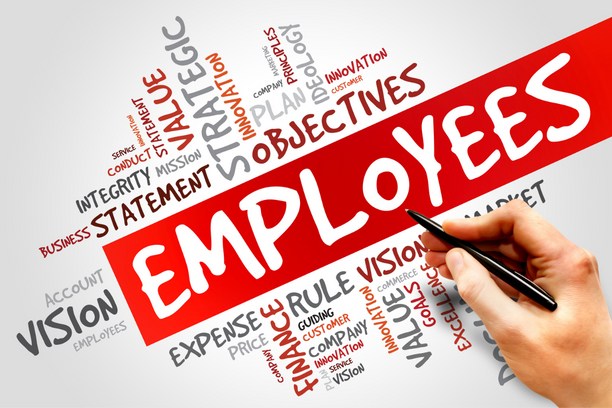This is a challenge many leaders fear, but at some point they will have to deal with a difficult employee. Problematic employee behavior drains your energy, demoralizes your team, and destroys productivity. So managers need to know how to deal with difficult employees quickly and effectively. Let's take a look at what a challenging employee looks like, and some proven strategies and solutions for dealing with them.
Scenario 1: I was disappointed. employees fail to meet their responsibilities
Poor performance at work can be due to lack of skills, motivation, or both. It could also be due to poor communication, poor coordination, lack of resources, or something else entirely. Don't dismiss employees as lazy when they aren't doing their part well. There may be hidden reasons behind their poor performance and lack of motivation. Maybe her job no longer challenges her. They may want to have more impact, but may be frustrated by the lack of investment from others. You may feel that there is Alternatively, they may lack certain skills required to perform their duties. You may also feel that there are no opportunities for career growth and development. On the one hand, their lack of motivation may have nothing to do with their work. Health and personal issues may be making it difficult for you to concentrate and work effectively.
Scenario 2: Bad attitude of employees
A difficult employee behavior can affect the entire team. Negative attitudes from problematic employees create a toxic environment. Often, but not always, bad attitudes at work are passive rather than direct confrontations. Maybe it's a not-too-subtle grin, roll-eye, being late, or being inattentive in a meeting. Alternatively, you may be less conscious: A hardworking employee who becomes cynical and always takes a negative view of all interactions and suggestions. Bad attitudes can be funny at first, but they affect everyone in the end. Bad attitudes and negative behavior disrupt the entire team and affect employee performance. But that's not all. If they also behave badly when dealing with customers and suppliers, they are putting your business and reputation at risk.
Scenario 3: Employees are undermining your authority
Employee morale and productivity suffer when they undermine your authority. Other employees may also question your leadership skills. But not all employees who subvert authority do so with malicious intent. Employees can undermine leaders because they have perspectives that managers do not see. They are so passionate about their point of view that they may not realize how their style of communication undermines others. In other cases, an employee's disruptive behavior may be a deliberate attempt to undermine you. As a leader, if you know how to distinguish between the two, you can effectively address the issue.
Dealing with difficult employees - practical guide
When dealing with a difficult employee, the following steps may help resolve the situation.- Criticize actions, not people When dealing with problem employees, it's important to focus on specific behaviors rather than personal factors. Your role is not to judge them. Not only can this lead to unproductive conflicts, but it is also less likely to help resolve behaviors. The goal is to find ways to stop the unacceptable behavior of your co-workers and help them correct behaviors that unnecessarily make their jobs harder. Your job is to support them and find solutions. People aren't always aware of how their actions affect their work and the world around them. Start by getting her attention in a non-confrontational way. As much as possible, assume good intentions. Remember, not all hard employees want hard. Then give specific examples of negative behavior to help them understand the problem.
- Determine the root cause of the problem The reasons for employee behavior are unique to each person. For this reason, it is necessary to identify the cause before tackling the problem. It may be related to: Your job Relationships with Other Colleagues personal problems that prevent you from doing your job properly As a leader, it's your responsibility to find the root cause of the problem and fix it.
- Accept feedback Problematic behavior can be a result of the employee's perception and experience of the work environment. Managers should be open to feedback. This may be related to leadership style or other issues the employee may have in the organization. Create a safe space for colleagues to voice their opinions. Actively listen so you can understand what they are saying. Listen to your employees with an open mind. Difficult people may need someone to listen and understand. This often helps them change their attitudes and behavior. 4. Give clear instructions As a leader, it is important to be effective in communicating your instructions clearly. In conflict situations, there are two main goals. Ask your colleagues to lower their defenses. It gives you the information you need to improve your behavior. To achieve this, you need to provide clear and detailed feedback on employee behavior, including specific examples.
- Write down expectations and tangible results Work with your colleagues to document expectations and behavior changes. Create a plan that establishes goals, timelines, and regular reviews of progress. This way you are both on the same page. It is also important to document the consequences of not making the necessary behavior changes. Most of the time, having a clear plan and being aware of the consequences of inaction will make the person take the problem more seriously.
- Monitor your progress After creating an employee action plan, the next step is to monitor employee progress. This will help you reach your goals within the set time frame. Here's how to monitor progress: Get feedback from other colleagues job quality assessment Hold regular one-on-one meetings Create written observations and reports for maximum transparency. At the end of the agreed period, use reports to assess success.
- Plan ahead A good and rigorous selection process helps avoid problems with difficult employees. New candidates are required to undergo a background check. Recruiters should examine the candidate's behavior in previous jobs and reasons for dropping out. Behavioral interviews help interviewers identify red flags that can later lead to difficult behaviors.
- Be calm and respectful Giving negative feedback or firing someone is never easy. Tensions rise and people often get angry. As a manager, it's important to keep your cool and avoid judgment and criticism. Maintain body language and a neutral tone. Stay factual, honest, professional and respectful. It can be difficult for some people to feel underestimated. Before we can take drastic action, we need to get to the root of their behavior.









